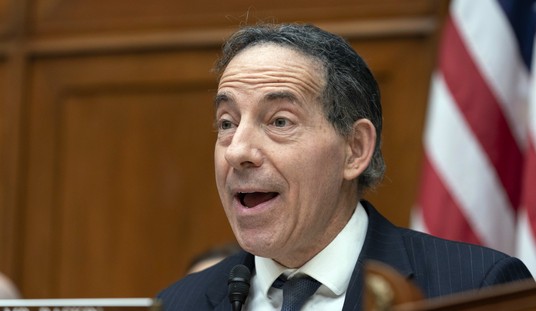
Wouldn’t that be a knee-slapper of an outcome?
Judge Sullivan “hoist by his own petard” by virtue of the fact that he needed DOJ approval to petition the DC Appeals Court for en banc review of the writ of mandamus issued by the Court directing him to grant the DOJ motion to dismiss the prosecution of General Michael Flynn. So far as I can tell based on limited research, it might just be correct.
Before I go deeper into the substance of the Response filed on Monday by DOJ to the Petition for En Banc review filed by Judge Sullivan on July 9, 2020, let me dissect this claim appearing among the final points made in DOJ’s Response because, if correct, hilarity will ensue from dismissal based on that argument. Later, I’ll have a separate look at the Response filed by Gen. Flynn.
The Government’s Response cites the Supreme Court’s decision in United States v. Providence Journal Co., where the Court observed there is only one “United States”, and it consists of three co-equal branches of government. The argument suggested by the Response is that all litigation in which the “United States” has an interest must be authorized by DOJ, which has exclusive authority to litigate on behalf of the “United States,” and whether he likes it or not, Judge Sullivan, in his capacity as a federal district court judge, falls within the definition of “United States” as recognized in that case, and is subject to the same approval process.
In the Providence Journal case, the district court had appointed a “Special Prosecutor” pursuant to statute to handle a “Criminal Contempt” prosecution of a litigant who had defied a court order. The defendant in the contempt proceeding was found guilty and appealed. The appellate court reversed the conviction, finding that the order which had been violated — a prior restraint on the paper’s right to publish a story — was transparently unconstitutional. The Special Prosecutor thereafter filed a Petition for Writ of Certiorari with the Supreme Court to review the Appeals’ Court’s reversal of the conviction.
After briefing, the Supreme Court dismissed the petition based on a lack of jurisdiction. Under 28 USC § 518(a), any litigation before the Supreme Court in which the United States has an interest must be initiated or approved by the Solicitor General of the United States. Because the Solicitor General had not authorized the Special Prosecutor to pursue the Petition for Writ of Certiorari with the Supreme Court, the statute deprived the Supreme Court of jurisdiction to consider the Petition.
The Special Prosecutor argued that the interests of the judiciary – specifically the district court’s interest in defending its contempt citation – was not within the “interests” of the “United States” described in § 518(a). But the Supreme Court disagreed, ruling there is only one “United States” – and that includes the Judicial Branch. So even in pursuit of a defense of its own authority, the judicial branch must seek permission of the Solicitor General’s Office of the Department of Justice to petition the Supreme Court.
The outcome of that case does not fit perfectly here because this is not a petition to the Supreme Court. But it underscores the point being made by DOJ that Judge Sullivan is litigating in his official capacity as a representative of the “United States” without the participation, support, or approval of DOJ – and only DOJ represents the “United States” in litigation. Other agencies have the ability to litigate in their own names as part of their operations pursuant to a statutory grant of authority — such as the Securities & Exchange Commission — but as a general matter, only DOJ represents the “United States” as an entity.
I don’t know that this argument will carry the day. If DOJ thought this was a “settled” point of law it would have advanced this argument at the beginning of its response because it is jurisdictional — the Appeals Court would not be able to consider the merits of Judge Sullivan’s petition. Such jurisdictional claims normally get presented first on appeal. The Response cites only one case, and it’s not directly on point because this is not a case pending before the Supreme Court which only the Solicitor General could approve.
But DOJ is making the point that Judge Sullivan is inappropriately holding himself out as some form of “independent” functionary who has standing to contest orders from the Appellate Court with which he disagrees, and the argument that he failed to seek DOJ approval before filing his Petition is made as part of a broader claim that his Petition is procedurally improper, and many thorny problems arise if it is granted by the Appeals Court.
Beyond this quite interesting legal point addressing the question of “How did we get to this point?”, the Government’s brief is – once again – an extremely well-written, to-the-point dismantling of Judge Sullivan’s attempts to justify his conduct as consistent with ordinary processes.
The Government properly frames the arguments around the question of whether en banc is warranted in this case given the purposes for which en banc is normally based. The Response argues that the Panel decision is not inconsistent with the Supreme Court’s Rinaldi decision, nor is it in conflict with prior decisions in the DC Circuit – namely the Fokker Services and Ammidown cases. En Banc review is normally invoked to settle seeming inconsistencies in decisions within a Circuit, or to address Panel decisions alleged to be contrary to Supreme Court precedent that is binding on the Appeals Court.
As to Rinaldi, the Response argues that outcome and reasoning of the Panel decision are both consistent with the language and decision in Rinaldi, which involved the purposes for the “leave of court” language in Rule 48(a) and the scope of the Court’s discretion in deciding such motions. Rinaldi did not endorse – it did not even discuss – the issue of the propriety of a district court developing a new factual record every time the government files such a motion as is contemplated by Judge Sullivan’s stated intentions in wanting to conduct an evidentiary hearing.
The government argues such a claim would contradict later Supreme Court decisions after Rinaldi that clearly state that the underlying reasoning with regard to a decision to not prosecute “cannot be the subject of judicial review,” quoting the Court’s 1987 decision ICC v. Brotherhood of Locomotive Eng’rs.
With regard to the Ammidown decision, the Response states that the opinion case says that “Rule 48(a) does not apply as such to the case at bar.” As such, the Panel’s decision, dealing specifically with the meaning of Rule 48(a) cannot be said to be “in conflict” with Ammidown. The Response highlights the one key passage of Ammidown critical to the entire rationale behind denying Judge Sullivan the hearing he so badly wants – the fact that merely because his view of what is in the “public interest” differs from the view expressed by DOJ as to what is in the “public interest” in dismissing the case, is not a basis upon which a Judge Sullivan can withhold approval of the motion.
The Government argues that even to the extent there is a conflict between language in Ammidown and the Panel decision relying on the more recent Fokker Services case, the full Court should not resort to an en banc proceeding based on “dicta” in Ammidown from 1973, when the Supreme Court has repeatedly emphasized over the ensuing 45+ years that the Executive’s charging decisions are not subject to judicial review.
The Response then turns to whether the Panel decision granting mandamus relief was appropriate. The Panel decision noted that “preventing” a lower court from interfering with a co-equal branch’s ability to discharge its constitutional duties was a sufficient basis to invoke the remedy of mandamus, so the Panel did not need to let Judge Sullivan act first.
The Response pointedly references the claim Judge Sullivan’s petition ignores – that engaging in the process Judge Sullivan has set in motion, and undergoing the examination and hearing Judge Sullivan has scheduled, is the injury to the government separate and apart from whatever the outcome of the motion, as decided by Judge Sullivan, might eventually be. Judge Sullivan’s treatment of this issue expressed the contumacious view that the entitlement to conduct a hearing on a motion pending in his court was his a matter of “right” as the district court judge, and the Panel decision intruded upon such right.
The Response justifiably points out that the Panel decision was not directed at the question of whether a hearing on a Rule 48(a) motion was ever appropriate, but rather that the hearing contemplated by Judge Sullivan ran afoul of the separation of powers doctrine because it was to “be used as an occasion to superintend the prosecution’s charging decisions” in a way that caused the specific harms as represented by the Government.
“Allowing the process to play out would impose irreparable injury on the government and on petitioner, and granting mandamus from any denial of the government’s dismissal motion cannot adequately remedy those harms.”
The Response asserts that the Panel’s decision was a fact-specific application of the facts in this case – what Judge Sullivan intended to do — to existing case law, the Court’s decision in Fokker Services and Ammidown. As such, en banc review isn’t warranted under the standards for such review established by the Court in prior cases.
As for the failure of the Government to seek mandamus relief itself – a point of procedure that many who oppose the Government’s motion to dismiss, and who think the Panel’s outcome was wrongly decided think should be controlling – the Government swats away that claim.
Under the Rules of Appellate Procedure, the Government is made a party by the action of Gen. Flynn’s filing of his petition. There was no need under the Rules for the Government to file a second petition seeking the same relief as that sought by Gen. Flynn.
Further, Gen. Flynn was entitled to invoke the same separation of powers arguments as the Government with regard to the unconstitutional nature of the hearing process Judge Sullivan had set in motion. Individual litigants, no different than the government, are irreparably prejudiced by having to endure conduct of a court which exceeds its constitutional authority — even if that conduct could also be addressed on direct appeal.
Lastly, the Response addresses the question of whether Judge Sullivan is even entitled to seek this review This is where the Response argues, as I noted above, that Judge Sullivan failed to obtain DOJ approval to seek judicial relief in his capacity as a representative of the “United States.”
Beyond that pointedly sarcastic argument, the Response does make a strong argument based on the Rules of Appellate Procedure and prior case decisions that district court judges, even when directed to participate in a mandamus proceeding initiated by a party, do not themselves become parties in the matter.
The Government makes the point that the parties and a Panel of the Appeals Court all agree that the litigation should come to an end, yet the district court judge insists that the matter continue. The Response notes four problems with Judge Sullivan’s efforts in his capacity as judge:
- A judge does not have a personal stake in the outcome of litigation — if he did, then the law requires that he recuse himself from the case. Absence of such recusal is conclusive on the question of whether or not Judge Sullivan has a “personal stake” he can assert in the matter. A mandamus order is not directed personally at the district court judge any more than is an order reversing a conviction on appeal, and no one asserts that a district court judge could seek en banc review of such an order.
- The Rules of Appellate Procedure provide that only a “party” may seek en banc review. Amendments made to the Rules in 1996 make it expressly clear that even when a judge is directed to respond to a petition for mandamus relief, as happened here, such a circumstance does not make the judge a “party” to the proceeding. Since Judge Sullivan is not a “party” under the Rules, he is not entitled to file a petition for rehearing.
- Judge Sullivan lacked authorization from the Appeals Court to file his petition for review. A district court can only participate in a Petition for Writ of Mandamus if invited to do so by the appeals court. Judge Sullivan did so in response to the Court’s Order that he file a response to Gen. Flynn’s petition. But there was no such authorization issued by the Appeals Court for him to seek en banc review.
- Judge Sullivan did not obtain DOJ authorization to seek review in a matter involving the “interests” of the “United States” as he had a statutory obligation to do as an official of the judicial branch of the “United States.
While these last four arguments are all interesting questions that would need to be addressed in order to resolve the merits of Judge Sullivan’s claimed entitlement to conduct the hearing he contemplates on the motion to dismiss, the more direct point being made by the Government Response is that none of these questions are worthy of resorting to en banc review to decide. The Government’s argument is that dismissing the petition avoids all these subjects, and it avoids having them considered and decided in such a “weighty” proceeding as en banc consideration.
The subtext to that argument is that the Judges of the DC Circuit should consider what might await them at another courthouse in Washington DC should they choose to entertain Judge Sullivan’s folly and resort to deciding these four “sticky” procedural problems.
All that can be avoided by simply reinforcing to Judge Sullivan the message of Nancy Reagan’s to the nation in the 1980s — “Just Say No.”














Join the conversation as a VIP Member